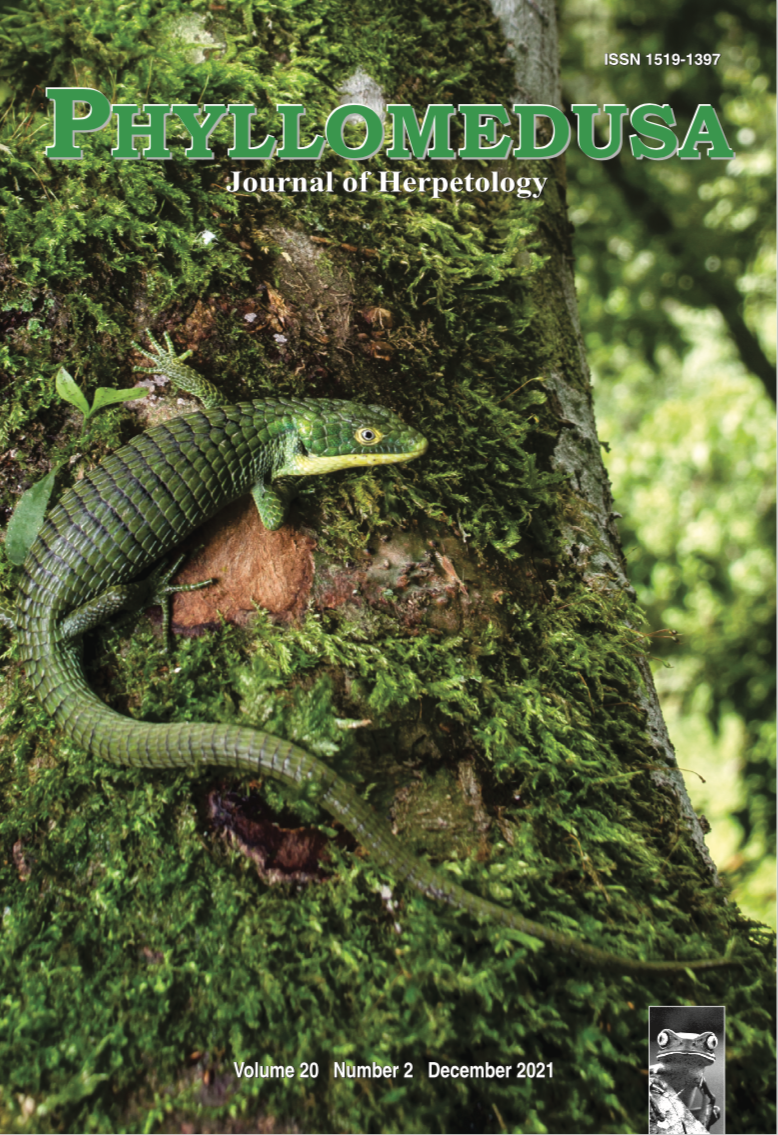High prevalence of anomalies in Nyctimantis brunoi (Anura: Hylidae) from a restinga protected area in southeastern Brazil
DOI:
https://doi.org/10.11606/issn.2316-9079.v20i2p165-179Keywords:
Amphibia, Booindicators, Casque-headed treefrogs, Contaminants, Morphological abnormalities, Skeletal deformitiesAbstract
In the present study we monitored a population of Nyctimantis brunoi, a species commonly found in restingas of southeastern Brazil. Field activities were carried out in the Parque Nacional da Restinga de Jurubatiba (PNRJ), a protected area located in the northern portion of the state of Rio de Janeiro. Specimens were sampled through a complete species inventory. We analyzed 218 individuals, 32 (14.7%) of which have anomalies. Additionally, a subsample of 15 specimens were radiographed to verify the occurrence of skeletal anomalies not externally detectable and to verify if the classification of anomalies attributed by means of external examination are detectable in the osteological structure of the specimen. There are 12 types of anomalies recognized in this population, three of them only detectable through internal investigation (radiography). We verified that most of anomalies externally detectable were correctly classified when compared to the osteological morphology of the radiographed specimens. Thus, in this investigation, the study of external malformations was capable to detect 60% of the types of anomalies. We conclude that further ecotoxicological and epidemiological studies of the population of N. brunoi in the PNRJ are necessary to establish the origins of anomalies in this species.Downloads
Download data is not yet available.
Downloads
Published
2021-12-21
Issue
Section
Articles
License
Copyright (c) 2021 ESALQ-USP

This work is licensed under a Creative Commons Attribution-NonCommercial-NoDerivatives 4.0 International License.
All material originally published in Phyllomedusa belongs to Escola Superior de Agricultura Luiz de Queiroz - Universidade de São Paulo. All contents are under a license of Creative Commons BY-NC-ND.How to Cite
Carmo, L. F., Guimarães, S. de O., Miguel, I. R., Pinna, P. H., Fernandes, D. S., & Woitovicz-Cardoso, M. (2021). High prevalence of anomalies in Nyctimantis brunoi (Anura: Hylidae) from a restinga protected area in southeastern Brazil. Phyllomedusa: Journal of Herpetology, 20(2), 165-179. https://doi.org/10.11606/issn.2316-9079.v20i2p165-179



 Impact Factor (JCR): 0.600
Impact Factor (JCR): 0.600 CiteScore: 1.0
CiteScore: 1.0